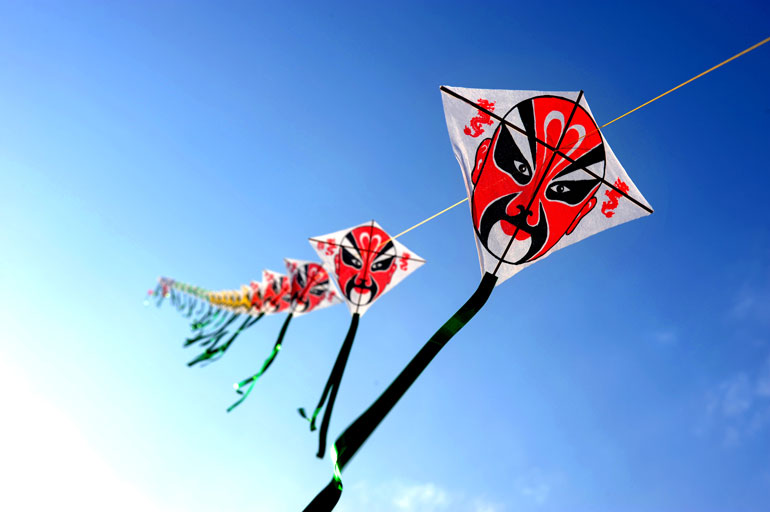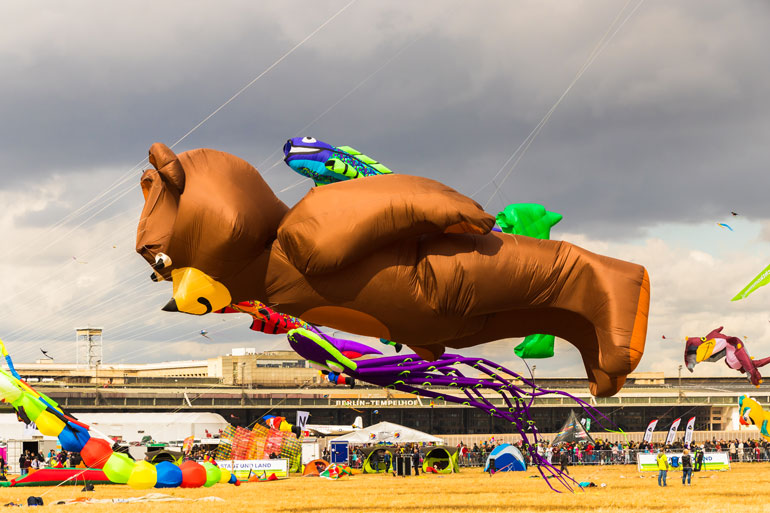A kite is a wing shape on the end of a line. The wing catches the air just like the wing on aircraft, and this causes it to lift off the ground.
If you hold up a piece of fabric in a strong wind it will begin to flutter and flap. Some parts start to rise and some parts fall. In a strong wind the whole fabric is lifted upwards. To turn this into a useful effect, the fabric has to be held stiff by using a frame. Then it becomes the same as a sail on a boat, but horizontal instead of vertical. Without all the flapping about of loose fabric, the wing can be pulled into an angle against the wind, giving it even more lifting power.
Kites can be made more stable by adding something like a tail fin on aircraft. It can be as simple as a trailing piece of fabric.
The way kites lift off the ground is the same as the way aircraft wings work. When wind blows across any flat surface held at an angle, the air moves more quickly over the top surface than the bottom surface. The fast flowing air moves away faster than it arrives, and this means there is less air pressure on the upper surface giving an upward pull. The reverse is true for air under the kite, so pull from above and push from below makes the kite rise provided it is not too heavy.
The very first aircraft experiments by the Wright brothers and others did not have engines and used the principle of kites. This is why the first planes looked like kites, with two wings stacked one above the other.
With proper design, kites can produce large forces. This is how kiteboarders manage to skim over the waves at high speeds.
Kites were invented in China, using paper or silk fabric for wing and bamboo for the fame that held the wing stiff. The earliest known Chinese kites were flat (not bowed as they often are today) and rectangular.
A form of kite, which nowadays we call a wind sock, was used by the Romans. But it was Marco Polo in the 13th century who brought the idea of Chinese flat kites to Europe.
One of the most famous uses of a kite was by scientist Anglo-American Benjamin Franklin in 1752 in his experiments to show that lightning was electricity.
Modern kites use two or four lines to allow the angle of the kite to be controlled.
Kites can be used to pull people downwind and they form the key part of sports such as kiteboarding on sea and on ice.






